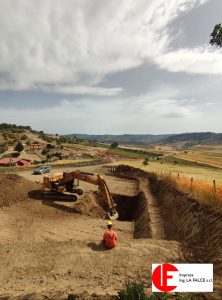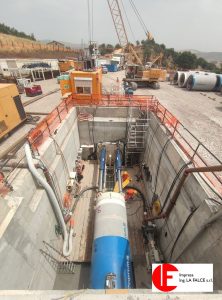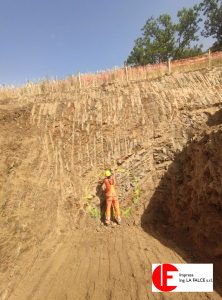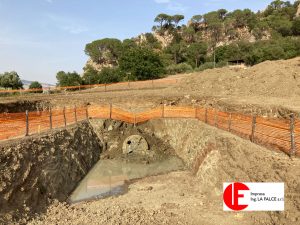September 2021
Three Challenging Routes Successfully Completed
New gas transport pipeline installed in Nicosia, Sicily
 The TransMed and GreenStream pipeline project, currently under construction, will transport gas from Algeria and Libya to Europe, via Sicily. As part of the project, a new gas pipeline was required to be installed using microtunnelling equipment in the Sicilian town of Nicosia.
The TransMed and GreenStream pipeline project, currently under construction, will transport gas from Algeria and Libya to Europe, via Sicily. As part of the project, a new gas pipeline was required to be installed using microtunnelling equipment in the Sicilian town of Nicosia.
To maximise the accuracy of the drive it was decided to utilise VMT’s SLS-Microtunnelling LT as the navigation system for the Herrenknecht manufactured machine. The contractor for the works – Ing. La Falce SRL – is a new customer for VMT.
All three drives for the project utilised VMT guidance systems, with the third drive recently breaking through on 16 September 2021. The first drive commenced on 1 May 2021, with breakthrough successfully completed just 27 days later on 28 May 2021. The second drive commenced on 14 June 2021, breaking through on 22 July 2021.
The drive profile of the 1.6 m diameter pipeline had a challenging vertical curve of radius 2,000 m, with Drives 1 and 2 having steep inclines at the reception end (+249 mm/m on Drive 1, +213 mm/m on Drive 2). Tunnelling was made particularly difficult by the high inclination and hard rock surface.
An environment of hard rock – sometimes combined with other materials – sees that tunnelling machines operate under high pressure and high contact force. Steep inclinations cause the squeezing of the pipes between two forces: while attempting to push pipes up from the start shaft, the weight of gravity presses them back down. This combination of conditions generated micro-stresses in different parts of the pipe string which were occasionally released. The resulting vibrations caused drastic and uneven back-and-forth movement of the pipe string, with the jackhammer-like movements increasing with each meter of the drives. To address the conditions, reinforcement was made on the TCA bracket. Although the VMT system still faced significant vibrations, the stability of the system was greatly improved, and excavation was able to continue as planned.
 In addition, advance surveying works were required to get a proper location of the pipe axis in elevation. Here, additional preparation and accurate flow during the surveys contributed to the successful system performance.
In addition, advance surveying works were required to get a proper location of the pipe axis in elevation. Here, additional preparation and accurate flow during the surveys contributed to the successful system performance.
Drive 3 presented its own challenges, demonstrating the variability that can often be experienced in underground conditions. Whereas the underground material of the first half of the drive consisted mostly of quartz – an abrasive material which can grind on the cutting wheel – the second half of the drive mostly consisted of clay, causing the periodic stalling of the machine.
Congratulations to our customer, partners and project engineers involved in the successful completion of these challenging routes.
At a Glance Fact Sheet:
|


